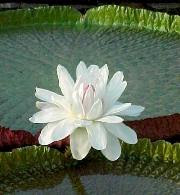 I love yuccas! If you've been reading along, you've probably figured out by now that there aren't too many plants I don't love, but I really, REALLY love yuccas! They're the agaves of cold-climate gardens. They give us that (mostly) stiff, upright, sword-like texture that is so important in the garden. I mean, really, what's not to love? They're tough, drought tolerant, evergreen; they come in a wide array of sizes, habits and forms. They offer up foliage in green, grey, blue, chartreuse and any number of variegated combinations! When they flower, they put on an amazing show that usually lasts for several weeks and then they develop seedpods that carry the interest right on through the fall and winter. It seems to me that they are very nearly perfect!
I love yuccas! If you've been reading along, you've probably figured out by now that there aren't too many plants I don't love, but I really, REALLY love yuccas! They're the agaves of cold-climate gardens. They give us that (mostly) stiff, upright, sword-like texture that is so important in the garden. I mean, really, what's not to love? They're tough, drought tolerant, evergreen; they come in a wide array of sizes, habits and forms. They offer up foliage in green, grey, blue, chartreuse and any number of variegated combinations! When they flower, they put on an amazing show that usually lasts for several weeks and then they develop seedpods that carry the interest right on through the fall and winter. It seems to me that they are very nearly perfect!Although I've rarely (maybe never) met a yucca I didn't like, I do have a few standout favorites that I feel the need to tell you about. The first is Yucca rostrata 'Sapphire Skies'. This is a recent introduction from Sean Hogan at Cistus Nursery (http://www.cistus.com/) and is set to take that gardening world by storm. Sean selected this form from a batch of seedlings for its powder blue color and it is now being grown from tissue culture and introduced widely in the nursery trade. It is pictured at the top of this entry in a photo from Terra Nova Nurseries (http://www.terranovanurseries.com/). Yucca rostrata is one of the hardiest of all trunk-forming yuccas and should perform splendidly well into Zone 5. In about 10 years time you can expect a magnificent specimen with a rounded head of powder-blue leaves atop a 4-foot trunk.
Another recent introduction and a truly spectacular plant is Yucca filamentosa 'Color Guard', with the most distinct golden variegation of any cultivar I've grown. It has far surpassed any other yucca in the garden where foliage color is concerned. The leaves are brilliant creamy gold with a deep green edge. In winter, the yellow variegation remains strong and is suffused with shades of deep, rich pink when grown in full sun. Talk about a spectacular combination! It is quickly becoming the industry standard for variegated yuccas and is, or soon will be, widely available at your local garden centers.
Now, with all of that carrying on over 'Color Guard', I do have to pay due respect to several other variegated yuccas that are more than deserving of your attention. Another that I have grown for a number of years and that has proven outstanding is Yucca gloriosa 'Variegata'. The leaves of this beautiful plant are blue-green with a lovely gold margin that changes to a light, creamy yellow during the summer months. In winter, it too takes on shades of pink around its edges when the weather turns cold. Yucca gloriosa is another of the trunk-forming yuccas, though slightly less hardy. I have had it in my Zone 6 garden for 6 years and it has flourished. In warmer climates you can expect it to form a trunk up to 4 feet tall after several years. One warning: The leaves on Yucca gloriosa are very rigid and viciously armed at the tip with a long black spine. Site it accordingly, i.e. probably not right next to the back door where you're carrying groceries in each week.
Yucca recurvifolia 'Gold Ribbons' is another bright spot in the garden--literally! One of the largest yuccas, it may reach upwards of 4 feet in diameter and, with some age, may form a trunk up to 6 feet tall. This takes some time, though, so don't let its size scare you off. The color is to die for! Brilliant gold leaves with deep, emerald green margins are soft, flexible and are not spined so no worries about backing into it while weeding! Another form that is occasionally offered is Yucca recurvifolia 'Variegata' with pendant, blue leaves edged in chartreuse/gold. With time it, too, will form a spectacular specimen. Both of these plants are available from Plant Delights Nursery (http://www.plantdelights.com/), for one, and 'Gold Ribbons' is also available from Yucca Do (http://www.yuccado.com/). Additional variegated forms you might be interested in include Yucca filamentosa 'Bright Edge', Yucca aloifolia 'Marginata', Yucca filamentosa 'Golden Sword' and Yucca filamentosa 'Garland Gold'. All are worthy garden plants.
I would be entirely remiss in leaving out the beautiful green and blue-green foliaged yuccas that have been garden stalwarts for so many years. Yucca glauca, Yucca filamentosa, Yucca rostrata (the species), Yucca baccata and several others all offer fine architecture to the garden throughout the year. Their candelabras of ivory-white bells in early to late summer are added bonuses when they occur (some more regularly than others)! This is not an exhaustive list, rather it is something to whet your horticultural appetite. I also tried not to list plants that wouldn't be hardy reasonably far north--at least Zone 6 and several into Zone 5. Yucca glauca will easily go into Zone 4. For those of you who live in Zones 7 and warmer, your choices increase 10-fold. Everyone should have a love affair with yuccas!





